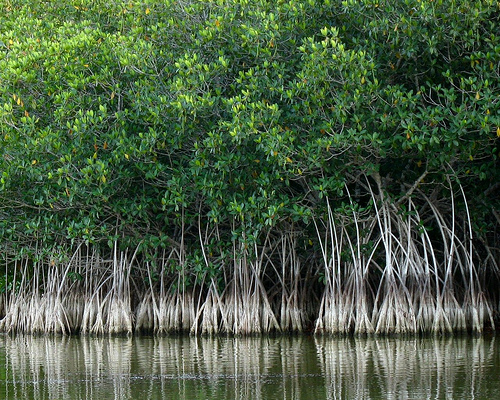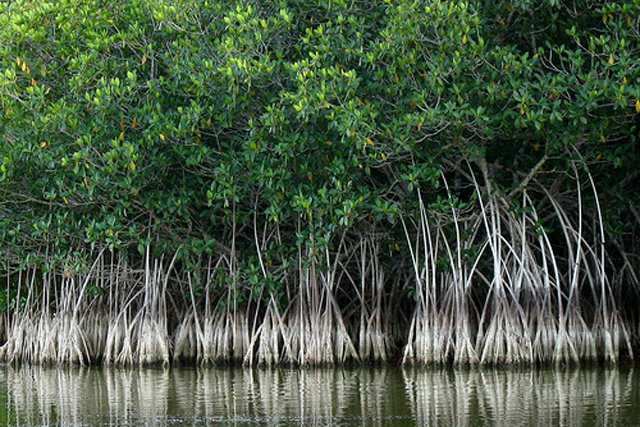From South Florida to St. Augustine, mangroves are making moves up Florida’s Atlantic coast, chewing up salt marshes in the latest indicator of global climate change. But scientists say the ecological consequences may not be harmful.
“There are plenty of examples of climate change having a negative impact, but this is something very different,” said Kyle Cavanaugh, a postdoctoral researcher at Brown University and the Smithsonian Environmental Research Center. “Here we have one important, highly productive coastal system — in this case, salt marshes — being replaced by another very important, highly productive coastal system — mangroves.
“The question we have to answer,” Cavanaugh continued, “is what do these changes mean to Florida’s ecosystem? I think we’ll find that they are not cause for alarm.”
Florida’s east coast gained more than 3,000 acres of mangroves in the past three decades, with mangrove coverage doubling in the area between Cape Canaveral and St. Augustine. That’s according to new research that Cavanaugh and colleagues published this week in the journal Proceedings of the National Academy of Sciences.
The scientists documented the mangrove spread by looking at Landsat satellite images from 1984 through 2011.
They examined and dismissed several possible explanations, including sea-level rise and a gradual rise in average temperatures. They pointed to another climate-change factor — a decrease in the number of hard freezes — as the reason for mangroves’ northern push.
“This project enabled us to quantify something that, up until now, had always been anecdotal,” said John Parker, a co-author of the paper and colleague of Cavanaugh’s at the Smithsonian in Edgewater, Md. “People had been saying: There are mangroves out there where they never used to be. The satellite imagery gave us the historical reference points we needed to confirm the changes.”
The researchers found that cold snaps of 25 degrees or less halt the growth of mangrove forests. With fewer hard freezes in recent decades, mangroves have been free to expand into new territories where temperature plunges previously kept them in check, like the coastline near St. Augustine.
Titusville, for example, experienced an average of 1.2 fewer days per year of extreme-cold temperatures between 2006 and 2011 than it did between 1984 and 1989. Daytona Beach recorded 1.4 fewer days per year in the same period.
“Over this window of the study, we didn’t see a lot of hard freezes, which meant the trees were free to grow and make babies,” Parker said.
Mangroves thrive in tropical and subtropical climates, providing nurseries and habitats for a range of marine life and protection from soil erosion and storm surges.
A severe freeze in the winter of 1989 depleted mangrove coverage along central Florida’s Atlantic coast, but researchers said the tree population fully recovered within nine years.
Another freeze like that would delay but not reverse the mangroves’ northward expansion, Parker said.
“A hard freeze would kill many trees and seedlings, but maybe three or four out of 100 would survive,” he said. “It would knock the poleward push way back, but it wouldn’t eliminate it.”
While the coastal study reveals new findings, scientists at Everglades National Park have been charting the inland movement of mangroves for decades. That migration is an indication of rising saltwater concentrations in groundwater, which is considered to be a result of both sea-level rise and the altered flow of fresh water through the Everglades.
Along the coast, mangroves may prove not to have a negative impact on ecosystems previously dominated by salt marshes. But scientists speculate that invasive weeds and other harmful plant life that, like mangroves, can’t survive cold snaps may pose a problem.
Cavanaugh and his fellow researchers said they are investigating that as well as mangrove movement in other parts of the world, starting with Florida’s Gulf Coast.
“There are mangrove forests all over the globe that are pushing up on the limits of salt marshes,” Cavanaugh said. “It’s a complex situation that we’ll continue to be looking very closely at.”







